safety-lane.com 07105
NEWARK
http://bit.ly/1DCt06V
What Causes Varicose Veins
Spider Veins and Varicose Veins
Spider veins and varicose veins are practically a rite of passage. As we age, many of us find the jagged purple lines or swollen bluish cords spreading across our thighs and calves. These warped blood vessels occur in up to 60% of adults. Find out exactly what they are, what causes them, and how to make them disappear — and see undoctored before-and-after pictures that meet WebMD’s editorial standards.
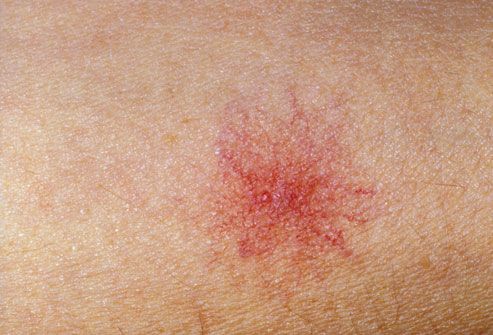
What Are Spider Veins?
Spider veins are small, twisted blood vessels that are visible through the skin. They may be red, purple, or blue and most often appear on the legs or face. They take their name from their striking spiderweb pattern.

What Are Varicose Veins?
Varicose veins are larger blood vessels that have become swollen and twisted. They appear dark blue and stick out from the skin like raised tunnels. Varicose veins can develop anywhere in the body, but usually sprout on the legs and ankles.
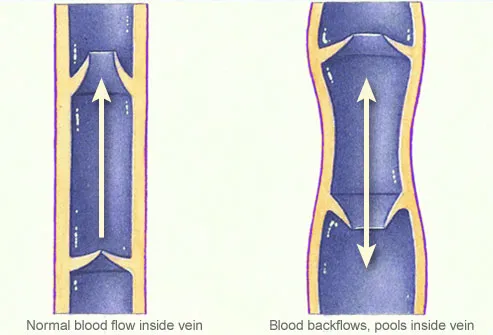
What Causes Spider/Varicose Veins?
Healthy veins carry blood to the heart through a series of one-way valves. These valves allow blood to flow in the right direction from superficial veins to deeper veins and to the heart. The vessels are surrounded by muscles which contract and help pump blood to the heart. Normally the veins have a one-way valve to prevent backflow. However, problems with the valves, muscles or blood itself can allow blood to pool inside the vein. As blood pools within the vein, pressure builds and the vessel wall weakens. As a result, the vein tends to bulge and twist. Depending on the size of the blood vessel and extent of swelling, the result is a spider vein or varicose vein.
Who Gets Spider/Varicose Veins?
Anyone can get spider veins or varicose veins, but women are twice as susceptible as men. The problem is also more common in people with jobs that keep them on their feet, including nurses and teachers. Other factors that may contribute include aging, obesity, pregnancy, prior trauma, or surgery to the leg and a genetic predisposition.
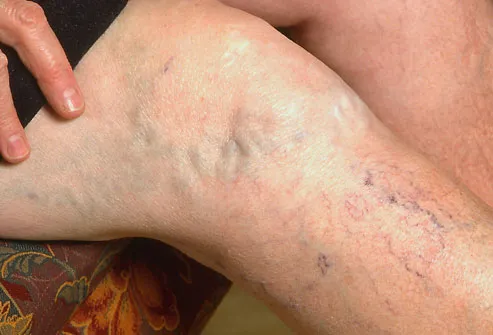
Spider/Varicose Vein Symptoms
For some people, spider veins and varicose veins are more than an eyesore. Varicose veins in particular may cause aching or cramping in the legs. The affected area may throb, burn, tingle, or feel heavy. Severely inflamed veins can be tender to the touch and may reduce circulation, leading to itchy, swollen ankles. They can also produce chronic skin and tissue changes such as discoloration and ulceration of the skin.
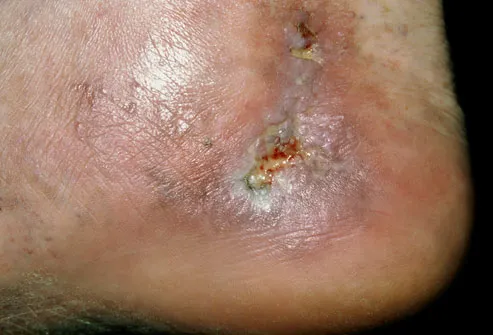
Spider/Varicose Vein Complications
Spider veins and varicose veins may be unsightly and annoying, but they rarely pose a serious health threat. Occasionally, they may contribute to ulcers forming– large sores in the skin — especially near the ankles. Varicose veins can also form painful blood clots.
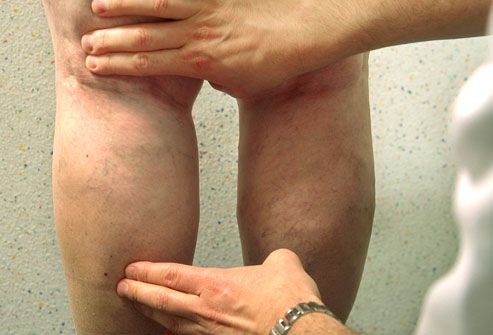
Diagnosing Spider/Varicose Veins
Spider veins and varicose veins are easy to diagnose. Your doctor simply looks at the patterns on your legs, feet, or other affected areas. He or she will also check for swelling, tender spots, ulcers, and changes in skin color. Most spider veins and varicose veins don’t need to be treated, unless they result in ulcers, bleeding, and phlebitis, or because you want them removed for cosmetic reasons. If the veins are causing pain, soreness, and muscle fatigue or cramping, there are steps you can take at home to reduce the symptoms.
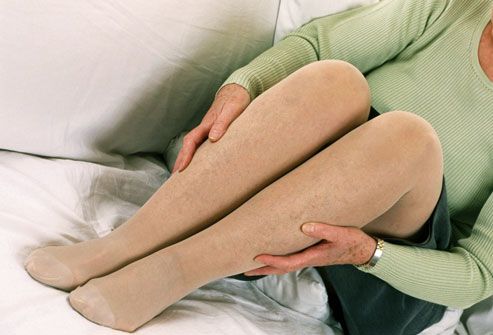
Treatment: Support Stockings
The simplest treatment for spider veins and varicose veins is to pull on a pair of support stockings. Sometimes called compression stockings, they improve circulation and relieve pain and discomfort in the legs. You can find them in knee-high or pantyhose style at surgical supply stores and some pharmacies.
Treatment: Lifestyle Changes
Losing weight and walking regularly can ease the symptoms of spider veins and varicose veins. If swelling is a problem, try a low-salt diet to reduce water retention. Whenever possible, prop up your legs with a pillow or recliner, so they rest at or above the level of your heart.
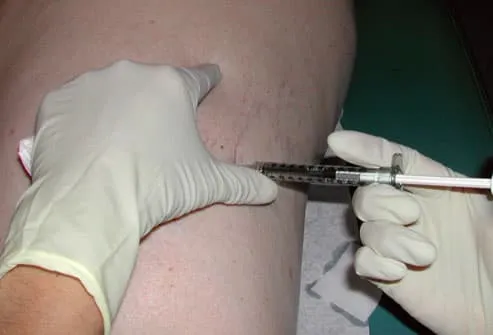
Treatment: Sclerotherapy
If home remedies don’t yield enough improvement, there are medical procedures to eliminate spider veins and varicose veins. Sclerotherapy wipes out 80% of treated veins. A doctor injects a solution directly into the abnormal vein. The blood vessel is destroyed, becomes fibrotic, and eventually disappears. This procedure requires a high degree of technical skill and special training. A thorough evaluation prior to the treatment is necessary to avoid side effects such as discoloration, or the formation of new, superficial tiny blood vessels. The solution can be highly caustic; inadvertent injection into areas outside the vein can lead to serious side effects in the tissue surrounding the vein.
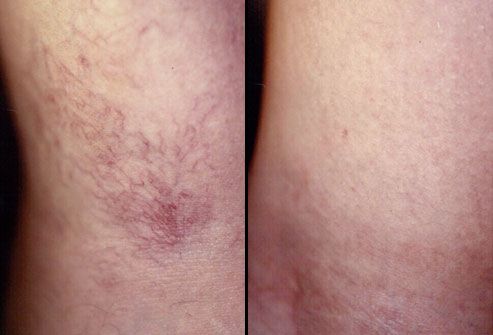
Sclerotherapy: Before and After
After treatments with sclerotherapy, spider veins generally disappear in three to six weeks, while varicose veins may take three to four months to respond. Once gone, the veins do not reappear. But you will probably develop new spider veins at the same rate as before.

Treatment: Laser and Light Therapy
Laser therapy and intense light pulse (ILP) destroys tiny spider veins and small varicose veins with heat. The heat causes scar tissue to form, which eventually closes off the vein. For some patients, this is an appealing alternative to injections. Side effects may include minor discomfort in the treated area, skin discoloration, and the formation of blisters.
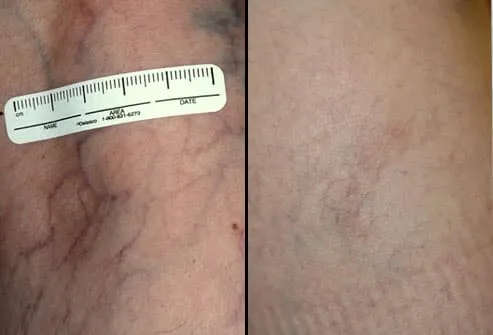
Laser Therapy: Before and After
Laser therapy works more slowly than sclerotherapy. More than one session is usually needed to get results, and it can take a year or two for the vein to disappear completely.
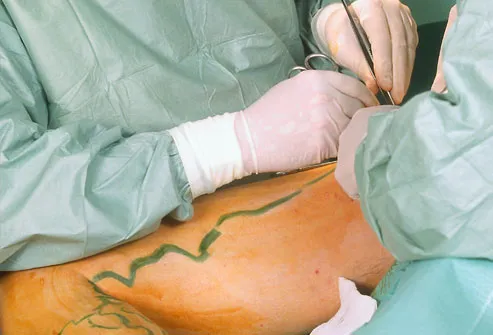
Treatment: Vein Surgery
For varicose veins that do not respond only to sclerotherapy or laser therapy, surgery is an option. The common procedure is ligation and stripping — tying off a vein and removing the problematic segment. This may be done with local or general anesthesia. If the vein is near the skin’s surface, it may be possible to remove it through a tiny incision that does not need stitches.
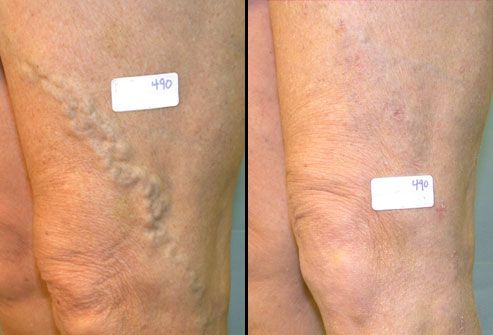
Vein Surgery: Before and After
Vein ligation and stripping successfully removes varicose veins in most people. The procedure does not require a hospital stay, and most patients can return to work in a few days. It’s important to consider that surgery done for cosmetic reasons may not be covered by insurance. In addition, there are now less invasive techniques for eliminating large varicose veins.
Treatment: Endovenous Laser
Endovenous laser is a new alternative for veins that were once only treatable by surgery. A small laser fiber is placed inside the vein, pressure is placed on the vein, and the laser delivers pulses of laser light. This causes the vein to collapse. Studies suggest endovenous laser is effective 98% of the time. Patients also report less pain and a quicker recovery than with ligation and stripping.
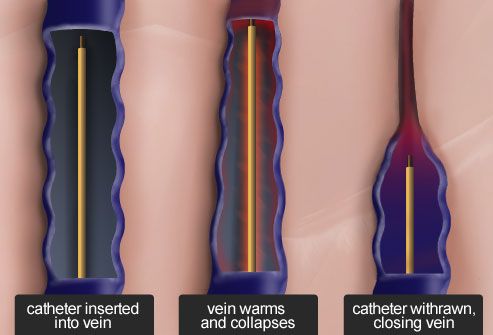
Treatment: Radiofrequency Ablation
Radiofrequency ablation is another option for large varicose veins. The principle is similar to endovenous laser. A small catheter delivers radiofrequency energy (instead of laser energy) directly into the vein wall, causing it to heat up and collapse. After about a year, the vein disappears. The results are comparable to vein surgery, but there is less risk and pain.
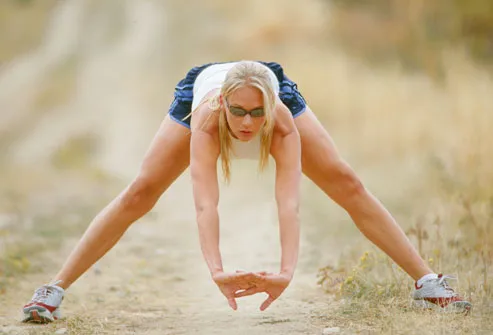
Preventing Spider/Varicose Veins
Getting plenty of exercise is the best way to ward off spider veins and varicose veins. Exercise helps keep your weight under control and your leg muscles toned, so your blood will flow freely. If your job keeps you on your feet, stretch your leg muscles often to increase circulation. And if you’re pregnant, try to sleep on your left side rather than your back.
via Blogger http://bit.ly/2LJBbY9

Recent Comments